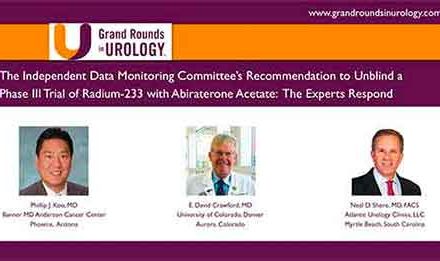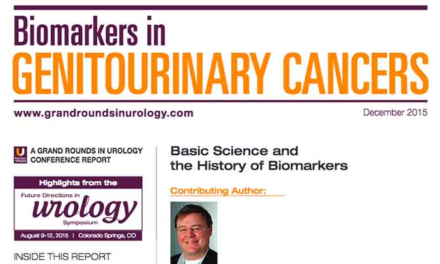
PCa Commentary | Volume 192 – August 2024
Posted by Edward Weber | August 2024
Androgen Suppression, Estrogen, Bone Density and Fracture Risk
The Basics:
Lupron and similar agents lower serum testosterone (T) by 90+% achieving the target level of 20 – 30 ng/dL but simultaneously also result in an 80% reduction of serum estrogen. The explanation for this is that in males more than ~1/2 of serum estrogen is generated in muscle, bone and brain by conversion of serum testosterone by the enzyme aromatase, with the remaining produced in the testicles. Estrogen helps maintain the libido, erectile function and ameliorates the hot flushes associated with ADT. Estrogen supports bone mineral density and decreases bone resorption. Deficiency of estrogen leads to osteoporosis, increased fracture risk, fat deposits, insulin resistance and memory loss.
Bone structure is not static but undergoes continuous remodeling: resident osteoblasts deposit new bone and osteoclasts reabsorb old and damaged bone. This year’s skeleton is not last year’s. The diminished estrogen associated with ADT leads to a 3 – 5.5% reduction in bone mineral density (BMD) over the first year of therapy and a 7+% loss at 24 months (Morote et al., Journal of Urology. 2006). Bone loss progresses through osteopenia to advanced osteoporosis which can be diagnosed on a DEXA scan (discussed later).
Comparison of Lupron v. Estrogen Patches Treatment in Men with Metastatic Prostate Cancer – the PATCH Trial (NCT00303784)
Prior to the FDA approval of leuprolide (Lupron) in 1985 metastatic prostate cancer was treated by orchiectomy or high-dose oral estrogen, as diethylstilbestrol 5 mg daily x 5 days monthly. However, serum oral estrogen after absorption traverses the liver where it promotes increased coagulation factors resulting in blood clots and adverse cardiovascular events. The thromboembolic and cardiovascular adverse effects of oral estrogen led to its replacement by transdermal application, which bypasses the liver, thus avoiding the cardiovascular issues, but can produce painful breast enlargement.
A PATCH trial (Prostate Adenocarcinoma TransCutaneous Hormones) begun in 2013 as reported by Langley et al., Lancet Oncology, compared the cardiovascular outcomes of patients receiving LHRH agonists (i.e., Lupron) with men with advanced and metastatic prostate cancer treated with transdermal estrogen (tE2). At 3 months 93% in both groups achieved castrate T levels and similar results at 6 months. Adverse cardiovascular events (strokes, myocardial infractions, angina) were similar, about 7 – 10%.
The initial patch dose was four FemSeven 100 microgram patches changed twice weekly for 4 weeks then reduced to 3 patches changed twice weekly, aiming for a testosterone level of 50 ng/dL. Their conclusion: with regard to cardiovascular adverse events “estrogen patches seem to be a potential alternative for men with prostate cancer.”
Interval results of the 2490-man PATCH trial were updated in 2024 by Gilbert et al., Clinical Oncology, confirming that androgen suppression with tE2 was equivalent to suppression with Lupron, but with “improved quality of life and bone health indices” and reduction of the “significant long-term toxicity of ADT,” referring to loss of bone density, increased risk of cardiovascular diseases, increased cholesterol, weight gain, fatigue and cognitive decline. In final analysis “men in the tE2 cohort were less likely to experience hot flushes (8% versus 45%) and less likely to experience a lack of sexual activity and sexual interest (59% versus 74%). However, tE2 produced significant gynecomastia (37%, tE2, versus 5%, ADT). A pivotal finding was that [after 2 years of treatment] tE2 significantly improved bone density yielding a +7.9% gain in the lumbar spine v. a -3% decrease with LHRH androgen suppression.” This change occurs rapidly over the 1st year: -1.4% with ADT (2 – 8% in other studies depending on patient characteristics) v. a gain of +6.0% with tE2. The authors’ expectation is that final results of the PATCH trial, expected shortly, will have “the potential to influence prostate cancer treatment.”
Measuring Bone Mineral Density:
Bone mineral density is measured by the DEXA scan (Dual Energy X-Ray Absorptiometry) which usually evaluates bone density in the femur, lumbar spine and sometimes the wrist. Results are reported in a range of minus 2.5 or more to greater than +2.5 with the range of -1 to +1 being ‘normal’. Two comparisons are made. For the ‘T’ score a man’s bone density is compared to the median score of men of the same age, race, height and weight. The ‘Z’ score compares a man’s bone density to the median value for young, healthy men aged ~20 – 30. It is recognized that a man’s bone density normally decreases with age. Up to age ~60 the T and Z scores for men are equivalent; thereafter, at 70+ yrs the ‘normal’ T score for men is 1.5 units lower than the Z of young men, and at 80+ the normal T is 2 units lower than Z. A score of -1 to -2.5 is termed osteopenic; scores > minus 2.5 are termed osteoporotic.
Considerations Based on Bone Density:
Ideally any man commencing hormone suppression should have a DEXA scan to establish his risk for fractures, but in actual practice there is a low rate of pre-treatment scanning. However, a DEXA scan is especially indicated for men possessing features that predispose to bone frailty and increased susceptibility to ADT, such as heavy alcohol use, smoking, minimal resistance exercise, age and low weight, insufficient dietary calcium and vitamin D and corticosteroid usage. The weaker trabecular bone found in the neck of the femur, wrist and spine render those locations especially susceptible to fracture.
Osteonecrosis of the jaw (ONJ) is a serious dental condition associated with the use of bone modifying agents (i.e., Denosumab and Zometa) resulting in deterioration of jawbone structure. The result is impaired bone healing after extractions. Its incidence increases with longer use of these anti-bone resorption agents. In a study by Van Poznan cited in the ASCO Post, 2020 the cumulative incidence of ONJ with Zometa in men receiving ADT for mCRPC was 0.8% at 1 year, 2.0% at 2 years and 2.8% at 3 years. “Shorter dosing interval, fewer teeth, use of dentures and current smoking were associated with increased risk.”
The 5-yr incidence of ONJ in men treated for metastases to bone from solid tumors with Zometa or Denosumab in a Scandinavia study (Ehrenstein et al., Cancer 2024) reported 5.7%, Denosumab; 1.4%, Zometa.
Incidence of Fractures in Men Receiving ADT:
The incidence of fractures over 5 years in men (median age 66 yrs) with locally advanced or metastatic PC was 19% (ADT) v. 13% (no ADT) (Myint et al., Front Oncology. 2020). Bone fractures in older men are consequential, a cause of morbidity, hospitalization and death. Prevention is the key to management, but pre-treatment DEXA scanning is underused. Huang et al., British Journal Gen Practice. 2024 found “For current ADT users, 39% showed intermediate fracture risk warranting a DEXA scan, with only 30% performed.” American Society of Clinical Oncology jointly with Cancer Care Ontario recommend “bone density testing to assess osteoporotic fracture risk for any patient prescribed systemic therapy for prostate cancer” (JCO Oncology. 2020)
Intervention:
A low bone density at ADT commencement should prompt preventive intervention. Denosumab (Xgeva and Prolia) and one of several bisphosphonate drugs (i.e., Actonel, Fosamax or Zometa) retard bone resorption. For men with bone metastatic CRPC typical dosing of Xgeva is 120 mg given subcutaneously every 4 weeks; for Zometa, 4 mg intravenously every 3-4 weeks (ibid, Gilbert). In a large study Fizazi et al. (Lancet. 2021) comparing Denosumab to Zometa in men with mCRPC reported the time to 1st fracture was 20.7 months for Denosumab v. 17.1 months, Zometa. In this study ONJ occurred 2% for Denosumab v. 1%, Zometa. During Denosumab and Zometa treatment calcium should be monitored periodically. In the Fizazi study hypocalcemia developed for Denosumab, 13%, v. 6%, Zometa.
Prophylaxes with supplemental calcium up to 2000 mg daily and Vitamin D3 up to 600-800 Units daily and regular resistance exercise are indicated. (Johns Hopkins Medicine).
BOTTOM LINE:
Transdermal estrogen (tE2) improves bone mineral density as opposed to bone density loss with LHRH agents. tE2 causes fewer adverse effects than the LHRH agonists/antagonists. If the results of the PATCH trial find transdermal estrogen patches superior or equivalent to LHRH inhibiting agents in the treatment of prostate cancer a new paradigm for the management of metastatic CRPC may emerge.
Your comments and requests for information on a specific topic are welcome e-mail ecweber@nwlink.com.
Please also visit https://prostatecancerfree.org/prostate-cancer-news for a selection of past issues of the PCa Commentary covering a variety of topics.
“We appreciate the unfailing assistance of the librarians at Providence/Swedish.”
ABOUT THE AUTHOR
Edward Weber, MD, is a retired medical oncologist living in Seattle, Washington. He was born and raised in a suburb of Reading, Pennsylvania. After graduating from Princeton University in 1956 with a BA in History, Dr. Weber attended medical school at the University of Pennsylvania. His internship training took place at the University of Vermont in Burlington.
A tour of service as a Naval Flight Surgeon positioned him on Whidbey Island, Washington, and this introduction to the Pacific Northwest ultimately proved irresistible. Following naval service, he received postgraduate training in internal medicine in Philadelphia at the Pennsylvania Hospital and then pursued a fellowship in hematology and oncology at the University of Washington.
His career in medical oncology was at the Tumor Institute of the Swedish Hospital in Seattle where his practice focused largely on the treatment of patients experiencing lung, breast, colon, and genitourinary cancer and malignant lymphoma.
Toward the end of his career, he developed a particular concentration on the treatment of prostate cancer. Since retirement in 2002, he has authored the PCa Commentary, published by the Prostate Cancer Treatment Research Foundation, an analysis of new developments in the prostate cancer field with essays discussing and evaluating treatment management options in this disease. He is a regular speaker at various prostate cancer support groups around Seattle.




